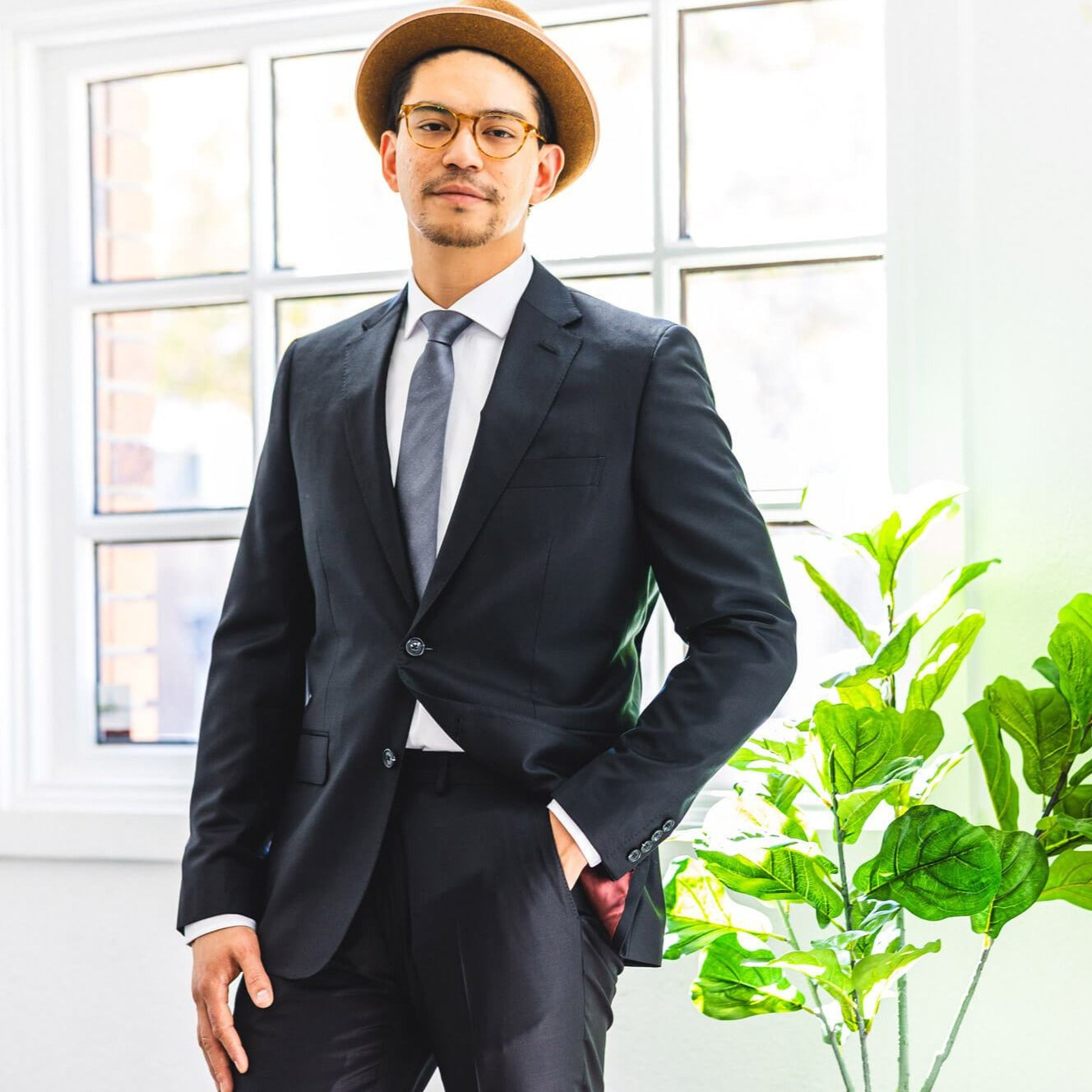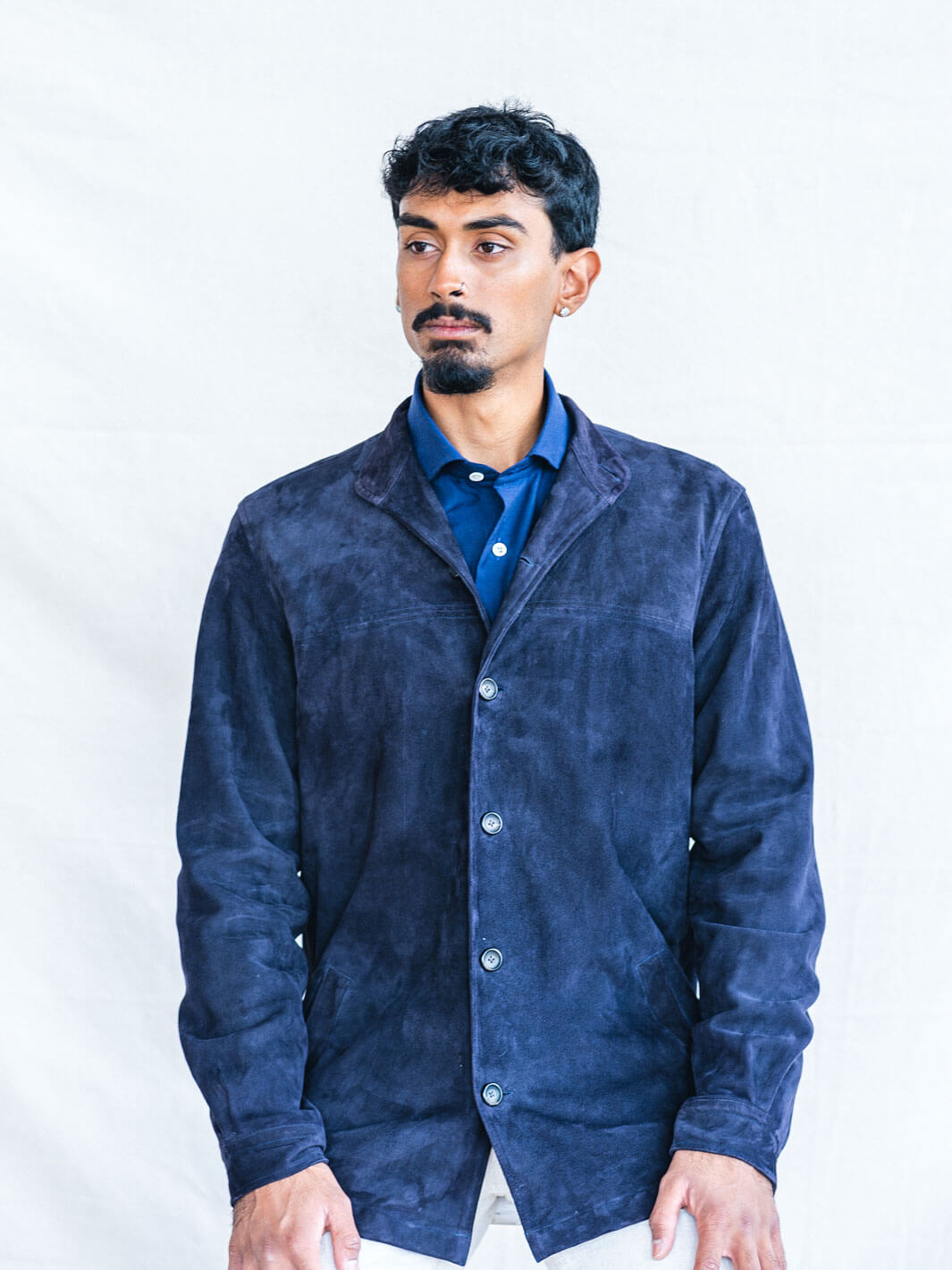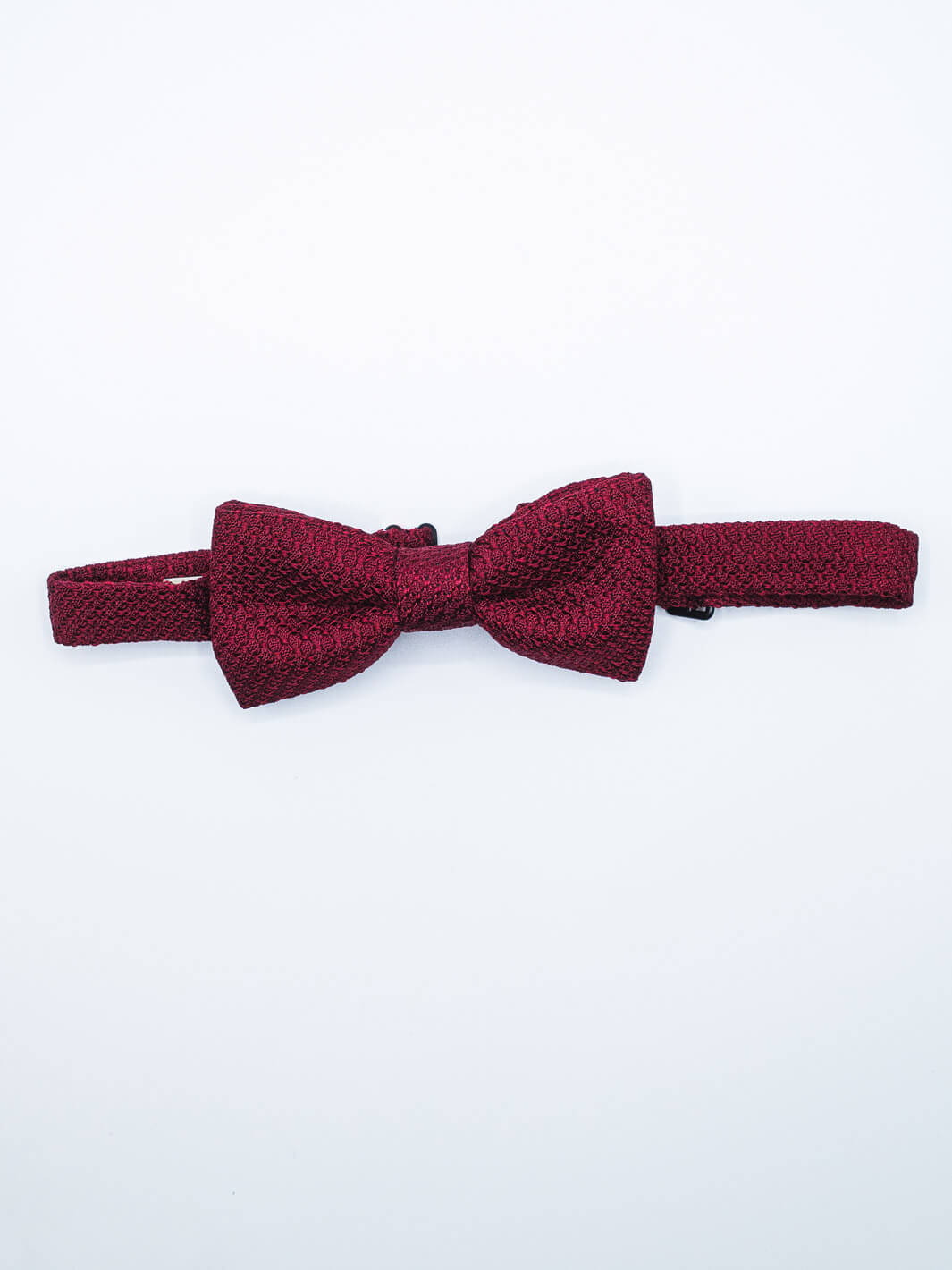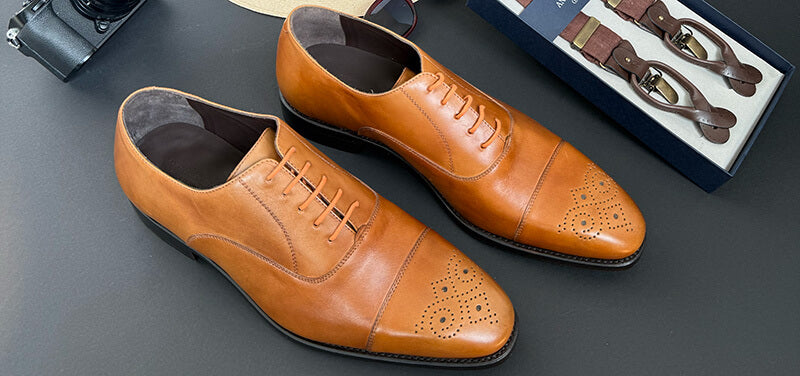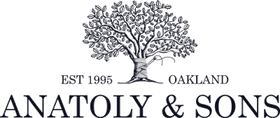Whether you're looking to buy a jacket for your next event or desire to make a custom garment that compliments your figure, you need to know the top 7 attributes of a jacket before you make a purchase. Below, I've composed a list describing some of the most important things to keep in mind:
1. The Collar
This part of the jacket is probably one of the least important things I pay attention to since typically most of today’s collars have a standard opening. However, you can find lower collars in vintage era jackets. Ideally, what you want is to make sure that the collar lays naturally around the neck and doesn't gap or pinch around the collar.
2. The Lapel
The lapel is what gives your suit its dramatic flair. Whether it's a slim/skinny lapel or a wide lapel, it should always lay smoothly down the chest. If it’s too tight, it will buckle/pinch/fold.
There are three traditional styles of lapels: Notch, Peak, and Shawl. The notch lapel is your everyday standard—a more common and versatile option. Next is the peak lapel. Considered more formal, it's often found in double breasted jackets. Last (but not least!), is the shawl lapel, which is typically found on smoking jackets/satin, thus making it, in my eyes, the most formal of the three.
3. Trimmings (Buttons, Buttonholes, and Stitching)
Personally, I believe the final touches on a jacket should be reflected in the hand details. The buttons can make or break the look of a jacket. Old gold/bronze buttons can be considered timeless or tacky depending on the client, while horn and mother of pearl buttons are considered top-notch in quality.
Milanese lapel buttonholes or hand-sewn buttonholes are always a plus.
Pick stitching down the lapel is important, and anywhere else is a beautiful add on. Different types of stitching can certainly make a jacket look/feel sportier, more formal, casual, etc. Working cuffs/surgeon cuffs are another sign of extra effort/higher end.
4. The Armhole

This is a very crucial part of the jacket. It cannot be made smaller, so choosing a jacket with an armhole that is relatively comfortable is very important. Keep in mind what your primary goal for this jacket is. Do you plan on wearing it for extended periods of time while sitting behind a computer or driving? Or do you intend to wear it only to formal events?
If you have a wide chest and big biceps, I would alway recommend a bigger armhole. However, a smaller armhole doesn’t necessarily mean less mobility. Read: Are My Armholes Too Tight?
Hand-sewn armholes are a sign of expert craftsmanship, but for a novice buyer it will be impossible to tell. Most off-the-rack and MTM don’t offer this option, so if you want this done, go to a master tailor.
5. The Shoulder Drape

The drape of a jacket begins at the shoulders. Big shoulders don’t necessarily mean that you should have a "Friday Night Lights" type of look. Everyone’s shoulders differ. Some of us have sloping shoulders, while some people have shoulders that sit high up. Therefore, the type of jacket shoulder you have should compliment your anatomical disposition. You’ll find most ready-to-wear shoulders with a standard shoulder or thick shoulder padding.
Two stylish options are the Neapolitan shoulder and the roped shoulder. Newer suits will have less padded shoulders/sleeve heads. Unless you choose roped, you'll notice the sleeve head is slightly padded on purpose to give off more of a stylish flair. Many people have debated whether or not shoulders can be fixed, but they can in fact be fixed by an expert tailor. Calling it surgery is a bit absurd, but any skilled tailor will know how to set the shoulders the right way. Is it costly? Yes. Is it worth it? Absolutely!
6. Fabric Choice
A lot of us are keen on finding certain colors or patterns, but have no idea if these fabrics are any good and whether they are sustainable. It’s important to find fabric from reputable mills who practice sustainability, use high quality raw materials, and have ethical practices. Similar to how chefs source their ingredients, the raw materials are a key component in making a good jacket. Certain fabrics are better for certain climates, so choose one based on where you live and the occasion it calls for.
Take a look at our list of fabric vendors here: Our Fabric Mills.
7. Sleeve Length & Jacket Size
The sleeve length is something that can always be adjusted. Of course, there are always little discrepancies. Where should the sleeves hit on the wrist? Should it show cuff? What part of the body should the jacket length cover? These are really based on your preferences and your body type.
Likewise, the body of a jacket can always be reduced/taken in and sometimes let out if there is enough material. Hence, I err slightly on the looser side.
One final thing I want to mention is: Pay attention to the front piece of the jacket. It shouldn't be too big/overlap like double breasted styles, especially if it's single breasted. The front piece can’t be corrected, so make sure it's not absurdly big.
-----------
To set up a fitting: Book an appointment
